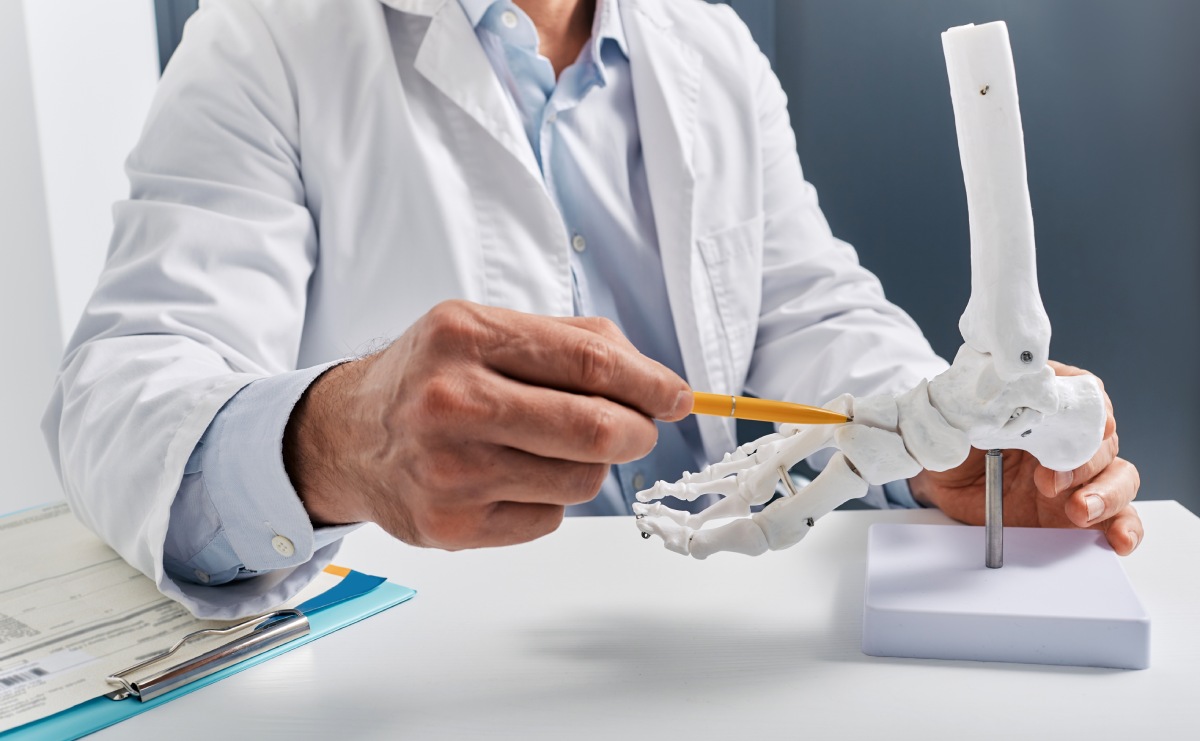What Are the Long-Term Effects of a Crush Injury on the Foot?

Foot crush injuries can vary in severity but can often lead to long term debilitation and decreased quality of life. People that have suffered crush injuries of the foot often complain of stiffness, soreness, or inability to perform activities after an extended period of time. These injuries can also cause “dysesthesias” or abnormal sensations which are associated with long term nerve damage.
What is a foot crush injury?
A crush injury of the foot is a condition that occurs after the foot is compressed between two hard surfaces causing a “crushing” effect on the bones within. This can subsequently cause extensive soft tissue (i.e. muscle, tendon, nerve, or ligament) damage. These injuries are unpredictable and have a high amount of variability depending on the cause of the injury.
Common Causes of Crush Injuries
Common causes of crush injuries include:
- Workplace injuries – Accidents when machinery or other objects fall on the foot.
- Sports injuries – Incidents when players (usually during football, soccer, basketball, etc.) collide with one another at high speeds often while unaware of the position of their feet.
- Motor vehicle injuries – A collision or debris from another vehicle can easily crush the foot.
What are the different types of foot crush injuries?
Foot crush injuries are often categorized as minor or major injuries. Minor foot crush injuries are often due to a small heavy object dropping on the foot. Major injuries are associated with high-impact injuries such as machinery or vehicle accidents.
Can a crushed foot heal completely?
A crushed foot does have the potential to heal completely depending on the severity. Minor injuries often involve 6-10 weeks of conservative treatment until symptoms begin to resolve. Major injuries often require surgical intervention and can require multiple months of recovery with physical therapy. A comprehensive treatment plan is key to ensuring appropriate healing of this injury.
What are the possible complications of a foot crush injury?
Common complications of a foot crush injury include:
- Stiffness
- Nerve damage
- Muscle weakness
- Pain
Injuries that involve the joint surfaces often lead to arthritis, which can result in bone spur formation leading to pain and stiffness years after the injury. The extensive soft tissue damage can also cause delayed nerve healing which can result in weakness and abnormal sensations to the foot. The combination of these complications can result in an unstable foot that often becomes fatigued after activity.
How long does it take for a crushed foot injury to heal??
Minor foot crush injury can often require 6-10 weeks of conservative treatment until symptoms resolve, involving protected weight-bearing, activity modification, anti-inflammatory medication, and physical therapy. Major foot crush injuries often require surgery and can take up to 6 months to 1 year until a full return to regular activity is possible.
What are the symptoms of nerve damage in the foot?
Common symptoms of nerve damage after a foot crush injury include:
- Numbness
- Tingling
- Prick and pin type sensations
What is the most common symptom of nerve damage?
As previously mentioned, the most common symptoms of nerve damage are numbness, tingling, and prick and pin type sensations. These symptoms are typically intermittent and can worsen with activity or be relieved with rest. Another symptom of nerve damage is muscle weakness. This typically indicates a more severe type of nerve damage and often takes longer to heal.
How do you test for nerve damage in your foot?
A physical exam testing function and sensation is essential to determine nerve damage in the setting of a foot crush injury. Your foot and ankle specialist may also require a specialized test called a nerve conduction velocity (NCV) test or electromyography (EMG) to evaluate nerve function after a crush injury.
How long before nerve damage is permanent?
Regeneration of nerves is often slow and incomplete. A nerve that is not completely severed can take up to 12 weeks to heal. If a nerve is completely severed after an injury it may require surgical intervention to decompress or repair the nerve endings. It is not unusual to have nerve damage symptoms up to 1 year after the injury.
What are the long-term pain management options for a crushed foot?
If patients continue to experience pain despite conservative or surgical approaches a foot and ankle specialist can perform a cortisone injection for symptomatic relief. Intermittent use of oral or topical anti-inflammatories have also been shown to provide relief.
What are the physical therapy exercises for a crushed foot?
Regardless of the severity of injury, supportive shoe gear and orthotic insoles can provide additional stability after a person has recovered from a crush injury. These can prevent early fatigue and uneven joint wear. A continued regimen of stretching and lower extremity strengthening exercises can also provide relief of symptoms and prevent future injuries.
Treatment for the long-term effects of a crushed foot injury
At Alexander Orthopaedic Associates, our award-winning podiatric physicians have experience treating every possible kind of injury to the foot. Our physicians, physicians’ assistants, and physical therapists can properly diagnose your injury and put together comprehensive treatment plans that incorporate medication, physical therapy, and, when necessary, surgical intervention to alleviate your symptoms and restore your quality of life.
Contact us today to make an appointment.
